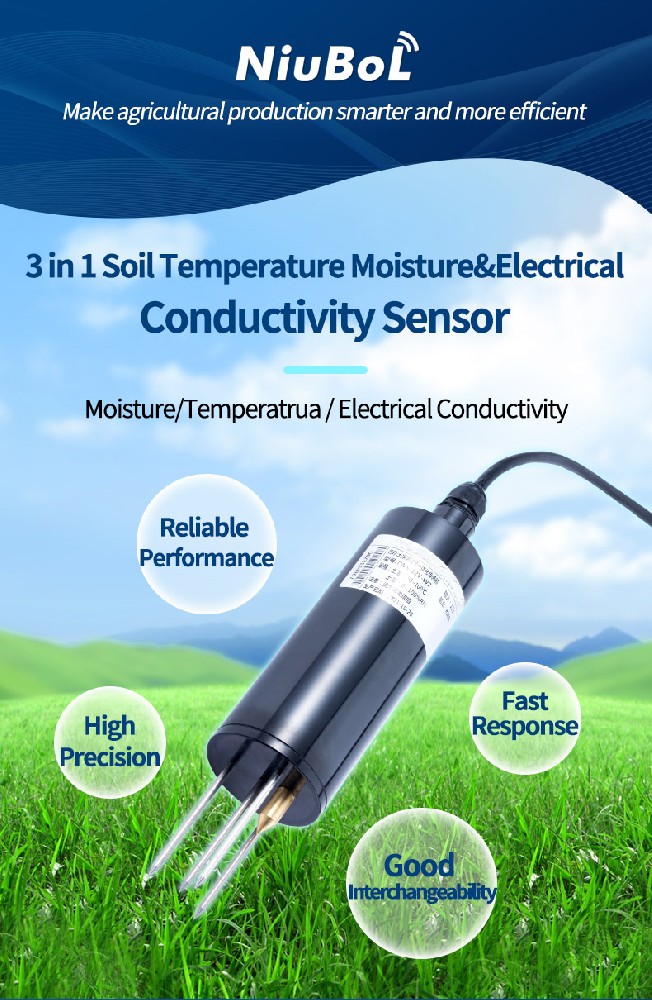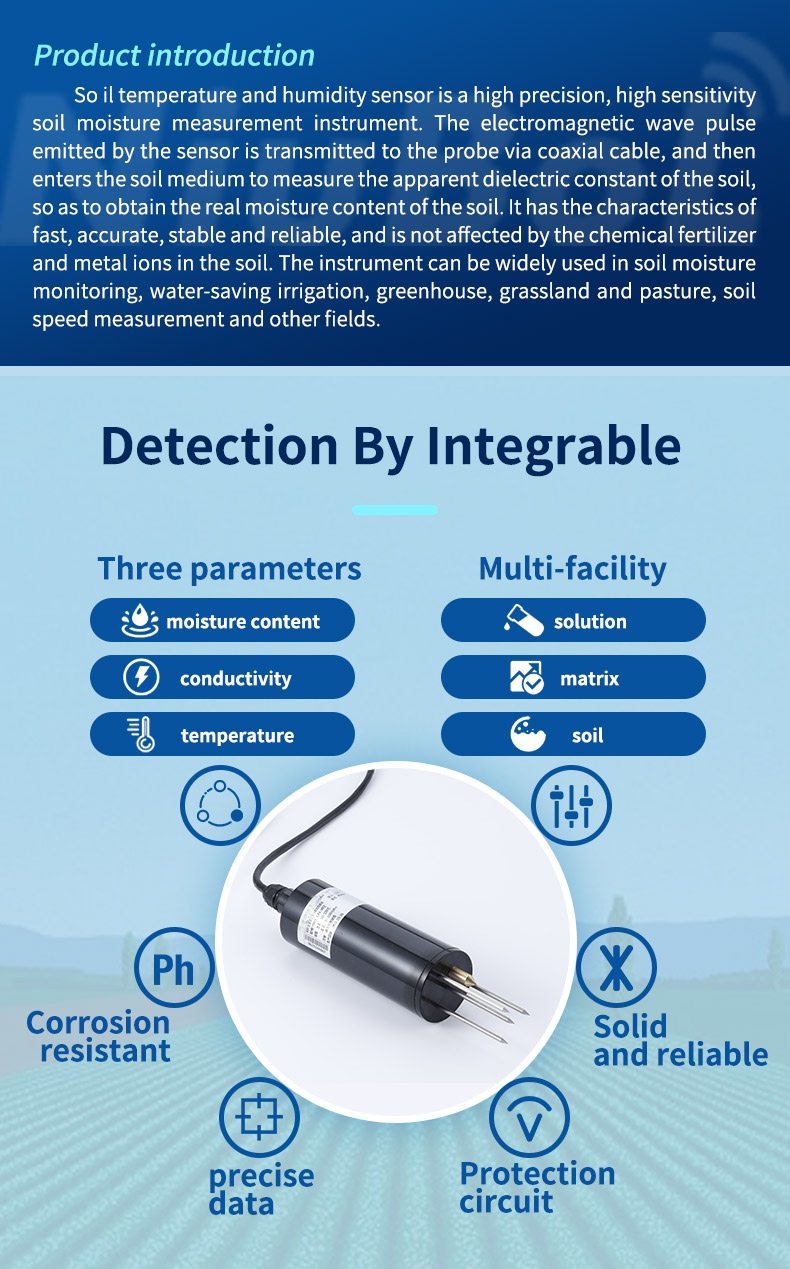

 咨询热线 15388025079
咨询热线 15388025079 时间:2022-05-10 21:21:27 浏览量:993
壤湿度传感器的常见类型
关于土壤水分传感器常见的种类,目前市面上测量土壤水分的方法主要有中子衰减法、张力计测湿法、介电法测速法,其中中子衰减法测量土壤含水量。
高速运动的快中子与物质作用时改变方向产生能量损失,变成慢中子,产生衰减。这是因为水中含有氢原子,中子损失到氢原子上比损失到其他原子上要大得多,这样,通过测量慢中子就可以测定土壤含水量,也就是通过测量中中子的衰减量就可以测定出被测物质中水含量的多少,中子土壤水分测试仪就是根据这个原理设计出来的。
该方法的优点是准确,但重要的是,如果这种方法没有很好的屏蔽,很容易造成辐射泄漏,污染环境,危害人体健康。农作物生长与灌溉、降雨、蒸发等变化密切相关,变化明显,是土壤水分最活跃的部分,需要实时监测,这大大限制了中子法的进一步推广应用。这种方法在发达国家应用广泛,周边家庭已经禁止使用压力传感器。

首先,利用土壤的介电特性测量土壤含水量也是一种有效、快速、简便、可靠的方法。对于具有一定几何结构的电容式湿度传感器,其电容与两极之间被测材料的介电常数成正比。由于水的介电常数远大于一般材料的介电常数,当土壤中水分增加时,介电常数也随之增大,湿度传感器给出的电容值也增大。
利用传感器电容与土壤湿度的对应关系,可以测量土壤湿度。电容式湿度传感器具有精度高、量程宽、可测量材料种类多、响应速度快等特点,可用于在线监测,实现全自动IJI压力开关。

其次,张力计式土壤水分传感器是一种广泛用于某些土壤水分测量的传感器,效果显著。这种仪器有一个多孔瓷头,通过一个充满水的管子与真空计相连。
该装置插入土壤钻孔内,多孔瓷头紧贴土壤,真空计设在地面。利用张力计测量土壤含水量得到了很大的发展。它的优点是:结构和原理比较简单,可以实时在线测量,并能确定水在土壤中的流向和渗透深度,但它的缺点也很突出,它的测量范围受土壤质量影响很大。
对于黏土来说,由于其通气性较好,即使在土壤水分负压低于0-8Pa的情况下,也可以用张力计测量土壤含水量。该方法测量的是土壤水的吸力,需要根据土壤水分特征曲线换算成土壤含水量。由于土壤水分与能量之间的关系非常复杂,呈非线性,且易受多种土壤理化性质的影响,即使对同一个土壤场,这种关系也非常复杂,因此用张力来估算土壤含水量极其困难和不方便,误差很大。该方法存在滞后和回环现象,影响其测量速度。
上一页:土壤温度传感器输出方式
下一页:土壤湿度传感器分类
相关推荐
相关产品